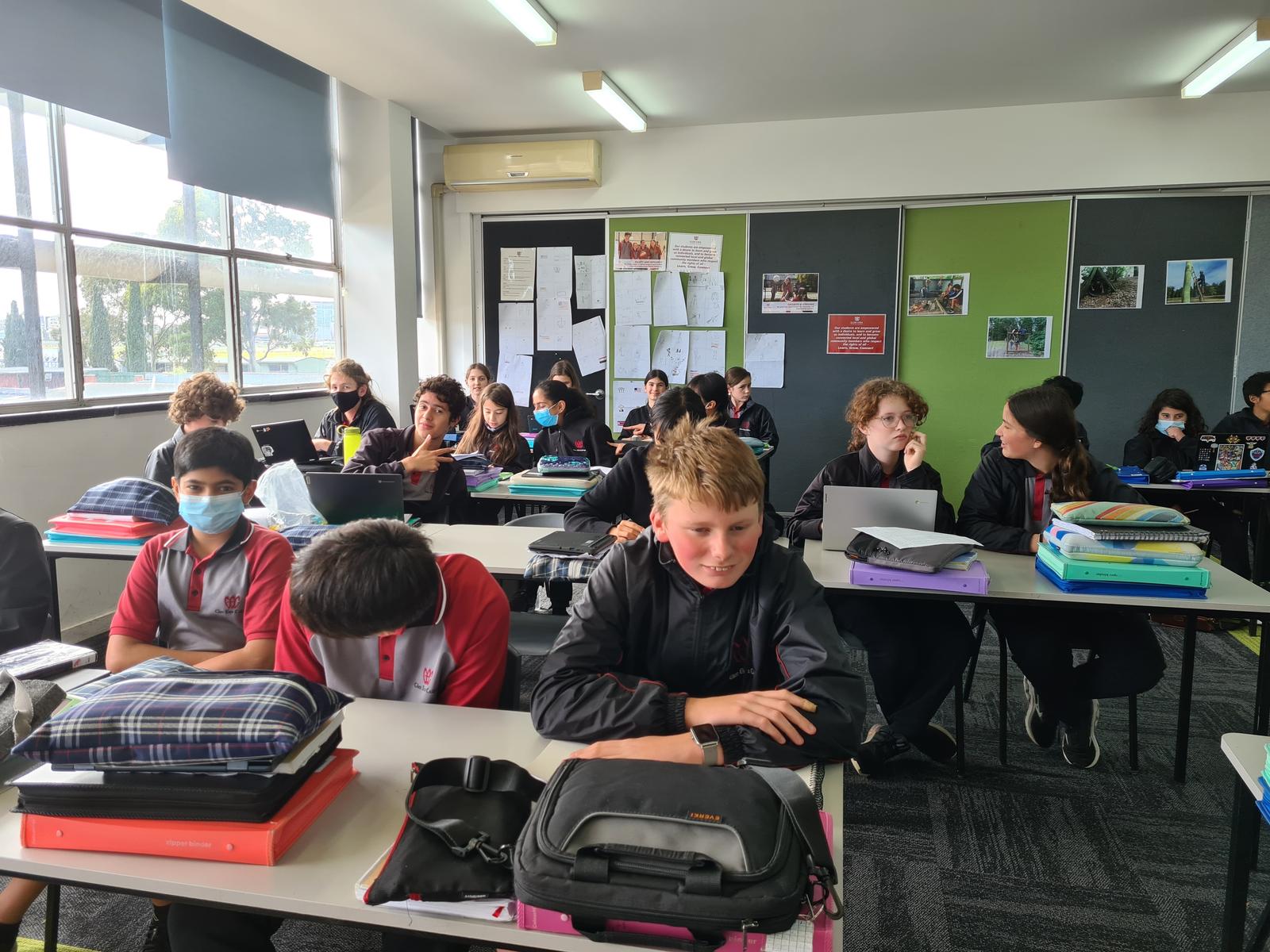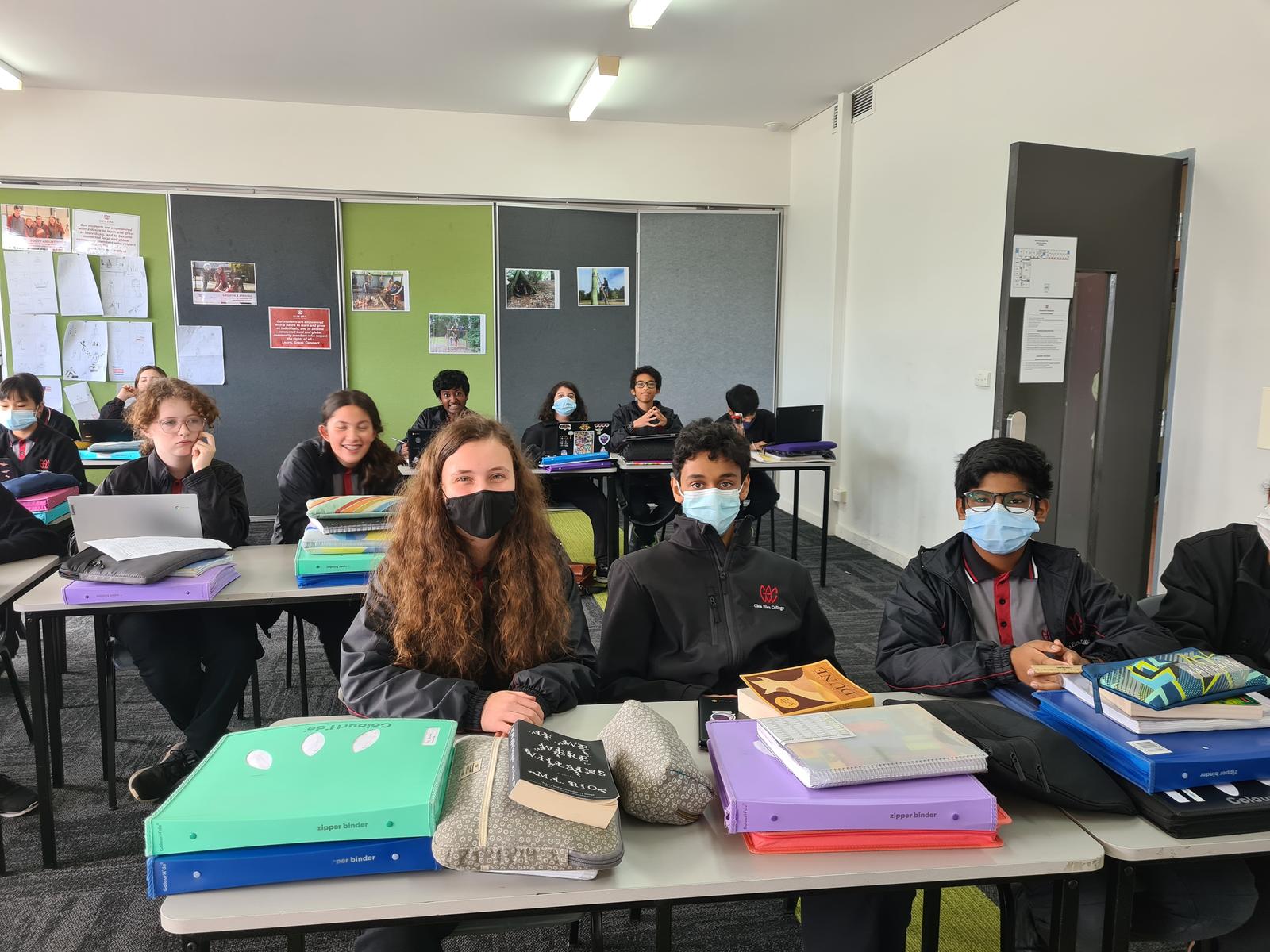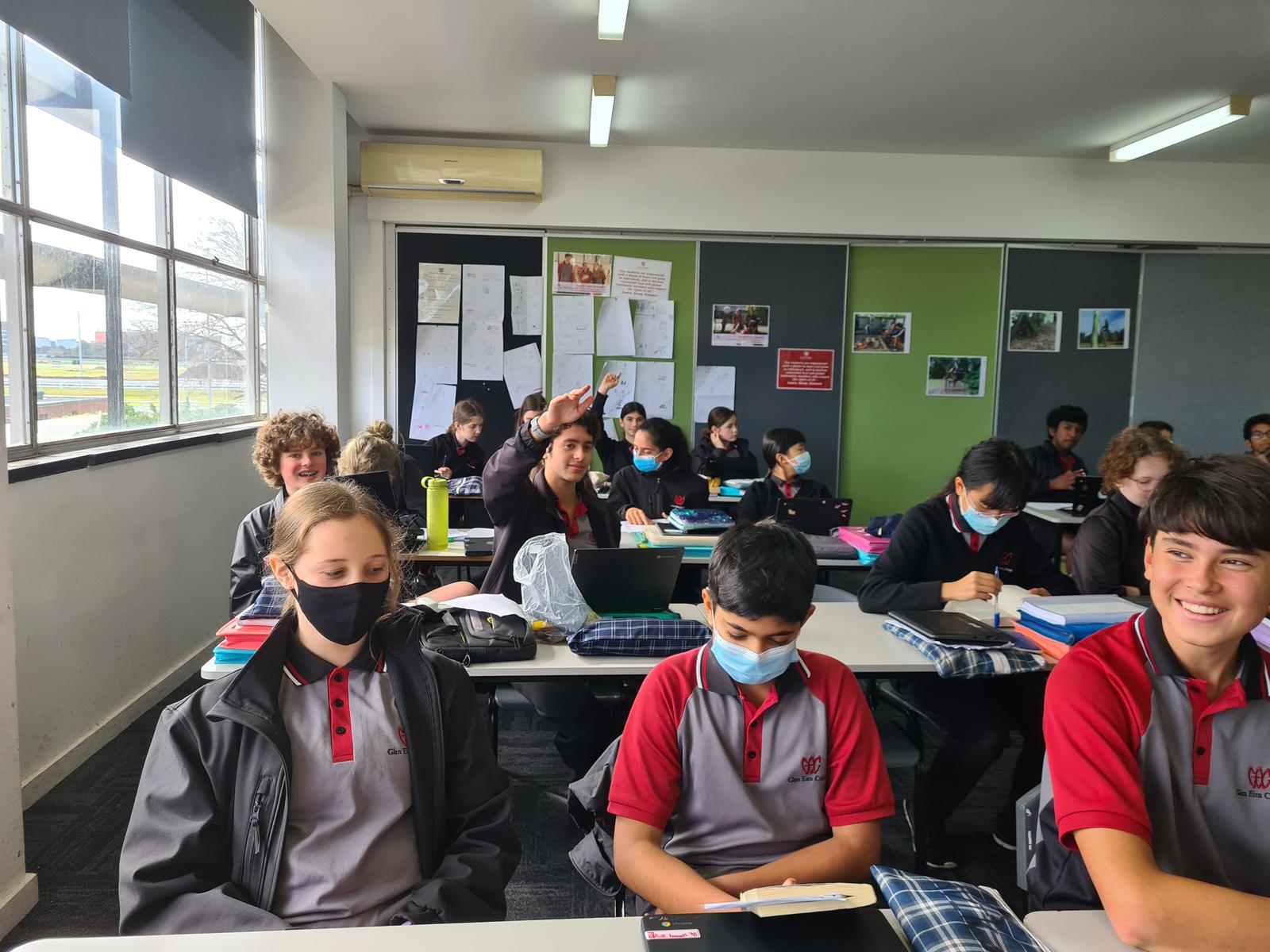Mathematics @ GEC

Year 7 Maths
GEC Maths classes especially in Years 7 and 8 have been engaging in collaborative problem solving tasks regularly this year. This edition comes with another wonderful reflections by students, this time by the students of 7B on a problem solving activity called ‘Split 25’.
Please read and enjoy:
“The task that we did on Wednesday 10th August, was quite a complex one, we first started off trying to find which numbers add up to 25. We then had to find the highest number if all those numbers were multiplied.
At first, I thought the task would be very straightforward, but once I started solving it, I realised it was going to be much more complicated.
My initial strategy was to find the biggest numbers that add up to 25, but I soon realised that wouldn’t work, so I started finding smaller numbers, and soon, after some investigation and trial and error, I came to the conclusion that 3 was the strongest number.
To get to my final answer, I first started to do 3x4x4……. Then, I realised a bigger answer would come from 3’s and 2’s because 3 is the strongest number and 2 would let me multiply more and also would occur more in the number.
I found this task fun and engaging, as well as complicated as it got me thinking and definitely would do it again. “
Avik Kamath 7B
“We did split 25, in which you can split the number into any amount of numbers and then figure out the product of those numbers. We had to find the highest number of the products.
At first I didn’t really know what to do, but I figured it out pretty quickly.
Originally, I was trying to get large numbers or a large amount of different numbers, however this strategy didn’t quite work.
I realised that using powers was much more effective in getting higher numbers so I began doing that more.
Rather than using large numbers, or large amounts of numbers we had to find powers, specifically powers of three. Using the most powers of three that you can, you will get a higher number
The strategy of powers of three works with any positive integer above three and I found this really interesting because at first I thought it was just a coincidence.
I enjoyed this task, because it was relatively easy, but a little tricky in the beginning. It made a lot of sense in my head and it was just a fun task to do in general.”
Elsie Barrett 7B
“Our task was to split the number 25 into different parts (e.g. 10+5+10), and multiply those numbers. We had to try and figure out the largest possible number we could create using this method. Before we started, I thought that this would take a long time as there are so many ways you can split 25. However, I soon realised that in order to find the largest product of the numbers, you would need to part the number into a large amount of small numbers (e.g. 3+2+7+8+2+3). Later on, I figured out that you could use powers to create a large product. This task was challenging but fun as our whole class was trying to see who could get the largest number first.”
Monako Bernabe 7B
We were given the number 25, and had to split it up into as many parts as we wanted, so long as those parts would have the sum of 25 (e.g. 10, 10, 5, or 1, 1, 1, 2, 2, 3, 4, 5, 6, etc).
Then, using trial and error, find the highest product you could make with those parts. After succeeding, we would then try and find a formula (of a sort) to use on any number. (e.g. split up the number 30 instead of 25.)
I thought the task would be quite time consuming, and would take ages before finding the formula.
“My initial strategy was to explore the following:
- Using many but low (obviously not using numbers 1 and 0) parts.
- Using little but high (numbers greater than 4) parts.
- Then determine which strategy gives me a higher number.
My strategy changed as soon as I saw that using the number 3 (and the number 2 for remainders) gave me the largest possible product.
We first used 5 to the power of 5, assuming that the square root to the power of itself would give the largest number, but then tried out other strategies such as 9 by 9 by 7, and 6 by 6 by 6 by 5 by 2. And only after 4 attempts had we, Ben and I, discovered the answer to the question: 3 to the power of 7 and 2 to the power of 2 would give us the largest possible number.
We, Ben and I, quickly started using 3s and 2s to give us the largest possible product for any number. Uh… Not to be a Negative Nelly or anything but it’s Math, not exactly the ‘most fun’ thing you could be doing, but I’ll admit, it was very ‘engaging’ and stuff, but not fun.”
Gabriel Merl 7B
“The task was to split 25 into integers and then find the product of the answers, an example is 12+12+1=25, then 12 x 12 x 1= 144
I felt fine because I thought it would be quite easy to find the pattern.
I started with having 3 large numbers than more small numbers and then I figured out that you could do 3^7 x 2^2=8748.
I figured out that the number 3 was the best number when multiplying because every type of number such as 35, 3 is the number that gets multiplied the most.
I just thought to get 3 and times it by itself that is 3 away, so you can multiply by 4 so your number can expand exponentially. E.g. 3^7, So you are up to 21. Then you times by 4. 21+4=25
I thought it was quite a simple but enjoyable task once you figured out a strategy which leads you to the answer. It was fun because it felt great once you found and understood the way to get the highest product of numbers that sum up to 25 or 35.”
Patrick Mills 7B
“This Wednesday, we were asked to take part in a problem solving exercise with Ms Kumaran, in this we were asked to split the number 25 into any number of parts, and multiply them to create the largest number possible. Initially, the task seemed very open-ended and like there was no way to logically approach the problem and solve it. But, after one or two attempts, we found that powers were the most efficient way to solve the problem, and that the difficulty was in finding the right balance between using many numbers and using larger numbers to achieve a balance. After another few attempts we found that 3 seemed to find that “goldilocks zone” and strike the perfect balance. Being that 1 did not alter the value of the number when multiplied, and that 2 was just not as effective (although I could not pin down exactly why…). 4, being 2 squared, was not extremely effective either, and 5 didn’t fit neatly into most numbers, wasting valuable calculations and using up too much value. The rest of the lesson was spent on proofs and figuring out if this same method worked for other numbers (which it did). All in all, it was an interesting challenge, especially considering that I do not tend to delve into number puzzles very often.”
Siddharth Rao 7B
“On Wednesday the 7B (SEAL) class was lucky enough to have Ms Kumaran come in to teach a specialist maths class. Taking a short break from the usual curriculum, the class instead focused on looking at analysing patterns in numbers through a task entitled The 25 Split. For the task it was required to split the number 25 and to find the biggest possible product of those numbers. At the start, the class was split into groups. Designed to help develop skills such as communication, articulation and logical thinking. After finding the solution, the class came together to discuss strategies and results, before being challenged to use their previously chosen method on any number. It was a wonderful class and a valuable learning experience. The class had a great time and are very grateful to Ms Kumaran for taking the time to come in and teach the lesson.”
Milja Lin, 7B
“The task was to split the number 25 into digits (23-2, 19-6 etc) and multiply them to get the highest number possible.
I felt really confident about this, because it was just a case of finding the right balance between having a lot of numbers and having big numbers.
We went straight to the obvious, and then found it about the balance between the digits.
We just kept on using trial-and-error, recording each of our sums and then going “Okay, this doesn’t work here, but maybe if we change that it’ll work.”
We found a solid number, but we kept on trying to go higher, seeing as some of our mates found the answer before us. We played around with our equations, until we got it right!
I think it was very positive, with lots of teamwork going on, and I found it a very interesting and interactive learning experience.
Because the interactivity and teamwork needed added to the fun factor, and the race to find it first was great and added a little spice of excitement."
Mathis Trevisani 7B
"We had to split the number 25, then see what partition, when we multiplied all the numbers, gave us the greatest result. For example, if 25 was split into 10, 10 and 5, the result would be 500.
I felt that it would be easy, while being difficult
My initial strategy was to multiply bigger numbers together. Then, I started to make my numbers smaller, so that most of the numbers were the same, and that any that weren’t were within one of the most common numbers. I shorted the partition until I was only using the numbers 3 and 2. The numbers 3 and 2 work together really well. If you have to split any number, use as many 3’s as you can, then fill in the remaining gaps with 2’s.
It was fun to work it out, because it went through quite a few steps, but they were not too difficult."
Ridhi Panuganti 7B



